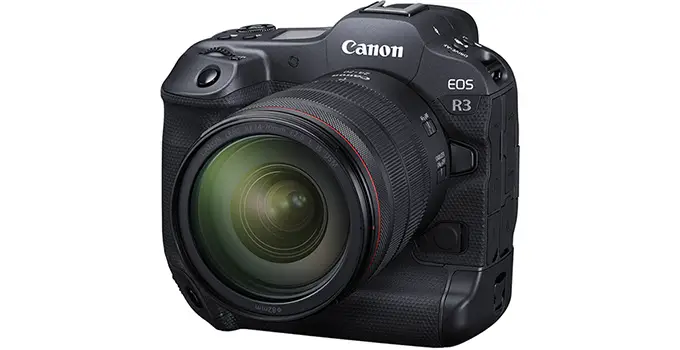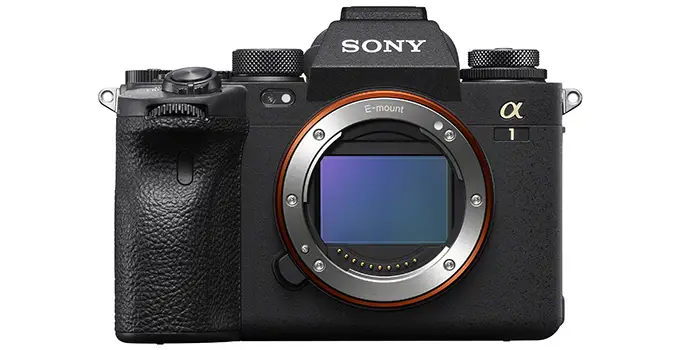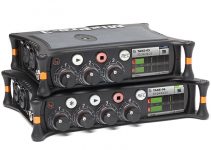The latest mirrorless flagships are all capable of recording advanced video, including things like raw or even 8K. Each one is unique and offers its own set of features that might make a decision a little tougher. Today we are going to take a look at the offerings from Canon and Sony, the EOS R3 and a1, respectively.
Both are incredibly capable camera systems. They are both also expensive and are serious investments for those fortunate enough to be considering one or the other. LensProToGo starts to take a much deeper dive into their various features. They run through the video options, autofocus, build, sensor, connectivity, and more.
The mirrorless flagship world is very different with companies making distinct choices compared to one another.
Video Recording
These cameras are optimized for professional photographers, but they have to have top-of-the line video specs if they are going to claim the flagship title. Both actually have very impressive specs.
Sony put 8K into the a1, offering internal 10-bit 4:2:0 recording in UHD 8K up to 30p. The more conventional UHD 4K modes are also solid with 10-bit 4:2:2 recording available at up to 120p. Plus, Full HD can reach 240 fps for extreme slow motion.
Canon on the other hand tops out in Full HD at 120p. It does match up in 4K at 120 fps. Also, it can record in either DCI or UHD aspect ratios – something missing from the Sony.

Image Credit: Canon
Raw video is available in both, though with very different implementations. The Canon R3 can record raw internally to the CFexpress card. The Sony can only output raw over HDMI to an external recorder. Canon is hitting 12-bit raw at up to 6K 60p while Sony can reach 4.3K with 16-bit out (12-bit recorded ProRes RAW) at up to 60p.
Both look great and you can’t do wrong with either. They might put the a1 ahead in 4K quality while Canon’s log profile is easier in post. That comes down a lot to personal preference.
Autofocus
This has been a major area of advancement in mirrorless and flagships are expected to have the best of the best. On paper the Canon wins out with 1,053 phase-detect points while Sony only has 759. Both do effectively cover edge-to-edge. Both keep focus extremely well and are great at tracking. Touchscreen support makes it easy to use as well.
Canon’s system may edge out Sony on usability and functionality since the menus and controls are a lot better to use. There is also the eye-catching eye tracking AF mode. It’ll watch where in the frame you are looking and focus on that point. It’s not a gimmick either, it actually works.
Both do also offer a lot of specialty modes for animals and other things.
Build and Design
These are very different when you look at them. Canon went with a more classic full-size design that has an integrated battery grip. Sony basically took their compact mirrorless and made some adjustments to make it work with all the features crammed into it. Is one better?
Probably not beyond preference since you can always add a battery grip if you want that design. It does push the price of the a1 system up a bit.
Sony’s body is smaller and therefore has a bit more cramped control scheme. Canon’s is a bit more ergonomic and has controls better laid out. The R3 also feels better and more durable.
The rear screen is different. Sony opted for a standard tilting screen while Canon went for a fully articulating display. Each has touch functionality. However, Canon offers a larger 3.2” display with a superior 4.15m-dot resolution compared to the more basic 3” 1.44m-dot LCD of the a1.
EVFs are also different. Sony does deliver on resolution here with a class-leading 9m-dot resolution. Canon may win with a slightly larger feel and Eye Control AF.

Image Credit: Sony
For recording the Sony a1 uses dual CFexpress Type A/SD combo card slots. Canon doesn’t have matched slots with one being SD and one taking CFexpress Type B. I personally prefer matched slots like the Sony and the fact that you can always opt to use SD and/or CFexpress Type A as you want is great. Canon’s setup is fine, and those Type B cards are faster, but not a huge fan of the mix and match.
Canon with the integrated grip allows it to take the bigger battery originally found in the 1D series. Sony uses the now familiar NP-FZ100 and both offer similar battery performance.
Image Quality (Sensor and Shutter)
There are different sensor designs here, though both are the latest stacked CMOS design. Sony went with a 50MP resolution while Canon chose 24MP. If you need the resolution the Sony will win out.
The more conventional 24MP of the Canon does give it some advantages for low-light performance and simply saving space if you are a sports shooter with a lot of burst shooting.
Both can shoot at up to 30 fps with the electronic shutter. That’s a great spec and each will support that speed with similar buffers of around 150 raw frames. Physical shutters do differ with the Canon R3 eking out a win with 12 fps and Sony hitting just 10 fps.
Flash photographers will be interested in the sync speed and Sony did some work here by getting up to 1/400 second while Canon stuck with the reliable 1/250 second. Nice to see.
Rolling shutter is solid on both in 4K. Moving to Sony’s 8K mode you will start to pick it up though.
Networking and Connectivity
Canon has given a lot of space for the 3.5mm headphone and microphone jacks. Under that is the PC flash sync port and around the corner on the front is the N3 remote. Also on the side is an RJ45 Ethernet port, a micro-HDMI out, and a USB-C connection.
Sony also offers an RJ45 network jack and PC sync port. It has a Multi-Terminal (micro-USB) for some accessories, USB-C, a full-size HDMI out, and the 3.5mm headphone and mic jacks. Everything mentioned here is all on the same size. That full-size HDMI is a huge win too.
Networking built-in is what separates the flagships from the rest of the pack. This allows shooters to quickly transfer files, especially in pro applications, as well as remotely control the camera over the network. For wireless there is Wi-Fi and Bluetooth. FTP is also available for both.
There is a lot to unpack here and unfortunately it’s still a close comparison. Sony a1 wins with 8K resolution and the full-size HDMI. Sony’s design is a bit lacking since it just repurposed the older design and crammed more stuff onto it.
The Canon R3 feels much better designed and the full-size offers extra controls. It’s got solid video with 6K raw internally and great AF, including the Eye Control AF. A few drawbacks are battery life being a bit short and the more conservative 24MP resolution.
It all comes down to your personal needs. Some of the drawbacks of one might be a positive change for someone.
Which would you pick?
[source: LensProToGo]
Order Links:
Disclaimer: As an Amazon Associate partner and participant in B&H and Adorama Affiliate programmes, we earn a small comission from each purchase made through the affiliate links listed above at no additional cost to you.


